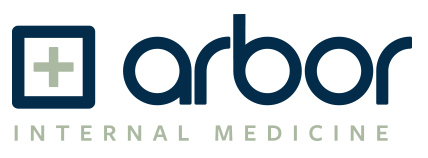When Mammograms Hurt Too Much
You’ve likely heard the line: “get your mammogram,” followed by an uncomfortable squeeze, pins-and-needles pressure, and the hope that today’s exam finds nothing scary. But what if there were a mammogram alternative—one that doesn’t hurt, that offers 3D imaging, and takes mere seconds? Enter what some are calling the “Vera Scan” (dedicated breast CT). It’s intriguing—and yes, I poked around the science so you don’t have to.
Let me speak to you, the Health Rebel—smart, skeptical, curious. You don’t just want what’s easy; you want what’s right. So here’s what I’ve learned.
The Problem with Traditional Mammograms
Mammograms (digital or digital tomosynthesis) are the standard of care for breast cancer screening. They rely on compressing the breast tissue to even it out, reduce motion, and minimize overlapping structures, thereby helping detect suspicious lesions or calcifications.
But many women postpone or avoid them because of the pain and discomfort. And for those with dense breasts, mammograms may have blind spots—structures can hide behind one another.
When a mammogram is inconclusive, or shows something suspicious, the usual next steps are ultrasound, MRI, or biopsy. Those are powerful tools—but not always efficient or comfortable.
What Is the “Vera Scan” / Dedicated Breast CT?
In short: it’s a cone-beam CT (CBCT) system specially designed for the breast (often called a “dedicated breast CT” or KBCT). Instead of compressing the breasts, you lie prone, your breasts hang through an opening, and a low-dose CT rotates to image them in ~ 7 seconds per breast.
Key features:
No compression — no “squeeze.”
True 3D isotropic imaging — so you can view any slice or angle without stacking or interpolation artifacts.
Better visualization in dense tissue — because overlapping breast tissue is less of a problem in 3D.
Use in diagnostic settings & biopsy guidance — it’s already being used in centers for evaluation after a mammogram finding, or to guide targeted biopsies.
But—and this is a big but—it is not currently FDA-approved for routine screening in asymptomatic women. Its FDA approval (PMA) is for diagnostic use (i.e., when something is found or unclear) in conjunction with mammography, not to replace it. The manufacturer even states on its SSED (summary of safety/effectiveness) that it should be read alongside standard mammograms.
So, at present, it’s a supplement (or advanced “problem solver”) more than a substitute.
Performance vs. Mammography: What the Data Shows
As someone who wants to see numbers, here’s what matters:
In published reviews and meta-analyses in diagnostic settings, dedicated breast CT has shown high sensitivity (~95 %) and good specificity (~70+ %) in detecting breast cancers. In many comparisons, CBCT outperformed standard mammography for masses and architectural distortions, especially in dense breasts.
Calcifications, however—especially microcalcifications (often an early sign of cancer)—are both mammography’s forte and mammography’s Achilles’ heel. Some CBCT systems are challenged in detecting very subtle calcifications; mammography (especially tomosynthesis) still often leads in that domain.
Radiation dose is in the same ballpark as diagnostic mammography (FDA documents report slightly higher average dose for the CBCT in their test population).
The real-world limitation: there are few imaging centers offering it, and insurance rarely covers it for screening purposes. When a procedure or technology lacks FDA screening indication, many payers will deny coverage. In diagnostic use you might have more luck with appeals or case-by-case justification.
Thus: in a head-to-head, mammography is still the established standard—especially for screening. But CBCT offers compelling advantages in certain scenarios.
So What Should You Do?
Here’s what I’d tell you, as your physician:
Don’t skip screening. Until CBCT becomes FDA-endorsed and widely covered for screening, mammograms (or mammogram + adjunct imaging) remain recommended for most women.
If compression is your blocker, tell me. If you absolutely refuse mammogram and cost is not the barrier, we could talk about a dedicated breast CT if available in your area—but know the tradeoffs and coverage risks.
Use CBCT as a “second opinion” tool: If your mammogram or ultrasound is inconclusive—“density cloud,” subtle distortion, overlapping tissue—then a breast CT can shine.
Let’s plan strategically. If you travel, or in your city there’s a center that offers it, we’ll decide together if it’s worth adding for you in that diagnostic or supplemental role.
What This Means for You
You deserve imaging that’s smarter, more comfortable, and tailored to your body. You deserve to understand tradeoffs—not be told “take it or leave it.”
Right now, the Vera Scan is a promising tool, but it’s not yet “the screening mammogram replacement.”
But if you and I decide it’s reasonable for your situation—your risk profile, your breast density, your willingness to pay or self-advocate—we can consider it.
Let’s approach this as a partnership: you stay informed, I’ll help interpret the science, and together we’ll make a plan.
If you want to go further, I’d love for you to book a consult so we can dig in specifically for you (risk factors, family history, local imaging centers). Or share this post with a friend who’s also wrestling with the discomfort vs. necessity of mammograms. The more we ask these questions, the faster medicine bends to our curiosity.
— Dr. Ivey

